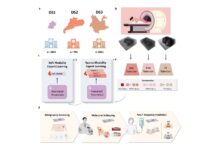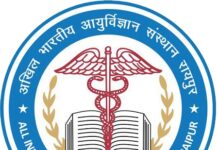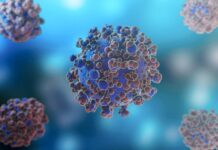Heart Disease and Lifestyle:
Doctors in Denial?
S. Srinivasan
It’s all in your mind, goes the standard clichéd saying. Mind over matter is an expression that glorifies the power of the mind over physical things and beings. In medicine, the power of the mind takes on different avatars of expression, e.g. will power to beat cancer, will power to bounce back after a major catastrophe like a near-fatal accident and so on. If the mind has so much power, it is quite easy to fathom what that mind can do to influence not just the way we think but also the way we behave. That’s where the recent buzzword lifestyle enters the picture, of course in style and with substance.
John Mandrola is a cardiac electrophysiologist practicing in Louisville KY. In his own words, he is also a husband to a palliative care doctor, a father, a bike racer, and a regular columnist at theHeart.org | Medscape. You can’t find a better-qualified person to talk about lifestyle and heart disease, so let’s hear him verbatim through the columns of Medscape and other weighty journals.
Quote: I think and write a lot about the role of lifestyle choices as a treatment strategy. As an endurance athlete, I know that exercise, diet, sleep, and finding balance in life are the key components of success. It is the same in cardiology. In a randomized controlled trial of primary prevention, no cardiologist would want to be compared against a good physical trainer or nutritionist. We would get trounced. Our calcium scores, biomarkers, pills, and procedures would not stand a chance. The study would be terminated early due to the obvious superiority of lifestyle coaching over doctoring – which would blunt the true treatment effect and make us look less bad. (Wink to my epidemiology friends.)
But this is a dreadfully tired message. It is, as Dr. Bryan Vartabedian writes in his book The Public Physician, another pool-safety post: Every summer, pediatricians and children’s hospitals write posts about keeping kids safe around pools. We don’t need another pool-safety post.
Doctor V, as he is known on social media, warns us that dry, empty writing on less-than-unique health topics does not stand a chance of being heard over the noise. He suggests overcoming this problem by coming at it with a new angle, viewpoint, or voice. I am not so sure about that. I write a post about new oral anticoagulant drugs or statins or AF ablation, and people pay attention to. You see it in the traffic. It’s the same story at medical meetings: sessions on drugs and procedures draw the crowds. Late-breaking studies rarely involve the role of exercise or eating well. Exercise, diet, and going to bed on time have no corporate backing. The task of drawing attention to the basics is getting harder, not easier.
And this is our problem. I believe the collective denial of lifestyle disease is the reason cardiology is in an innovation rut. This denial is not active or overt. It is indolent and apathetic. Bulging waistlines, thick necks, sagging muscles, and waddling gaits have begun to look like normal. During the electronic medical record (EMR) click-fest after seeing a patient, I rarely click on “normal” physical exam. The general appearance is abnormal – either overweight or obese. In mathematics, an asymptote is a line that approaches a given curve but does not meet it at a finite distance. This is how I see modern cardiology. Our tricks can no longer overcome eating too much and moving too little. We approach health but never get there. If you waddle, snore at night, and cannot see your toes while standing, how much will a statin or ACE inhibitor or even LCZ696 help?
In fact, a reasonable person could make an argument that our pills and procedures might be making patients sicker. The treatment of the elderly comes immediately to mind. A week doesn’t pass when I do not see a frail patient with late-stage malignancy (or other life-limiting diseases) who is still taking a statin. Although the statin drug did not cause the demise— biology did—this is an utter failure of basic doctoring, a total apathy to the obvious.
When I started electrophysiology, I mostly treated people with fluky problems. My ablation procedures were on people with supraventricular tachycardia (SVT) due to aberrant pathways. My devices were mostly pacemakers in the elderly – a disease due to aging. These sorts of problems are (mostly) independent of how many sugar-sweetened beverages one drinks. Now it is different. My practice is dominated by an atrial arrhythmia—a disease now recognized as being due (in large part) to excesses of life, such as obesity, high blood pressure, sleep disorders, and overindulgence in alcohol. In other words: unnecessary. I make hundreds of dollars putting a hundred burns in a left atrium for a disease that a poorly paid physical trainer might prevent or treat. This has become cardiology writ large.
But the thing I cannot get over is that I am a doctor, not a proceduralist. I am tasked with helping people be well. I fail in that task if I ignore the most effective and safest treatment option. I fail if I take the easy path. The prescription pad is easy. The EP lab is easy. The truth is hard. I also fail as a health writer if I give up trying to make the euphemistic pool-safety post sticky enough to make a difference. New anticoagulant drugs are easy. Ablation technology is easy. Statins are even easier. The truth—nutrition, exercise, balance in life—is hard. Cardiology and electrophysiology need to step back and take a hard look at how to make the pool-safety post interesting. When we do this, progress will come. Our patients will be healthier, society will be healthier—and there will still be plenty of procedures to do. Even transcatheter aortic-valve replacements. Unquote.
Okay. Granted. We need to do a lot of lifestyle counseling for our patients. But how? Well, we have the ABCDs of Lifestyle Counselling all laid out to us in an article in JAMA Cardiology (2016;1(5):505-506). Why not take a quick look at that as well? Quote: A diverse set of interventions may be necessary to curb rising obesity rates, including public health education campaigns, and environmental changes. However, for the busy clinician operating at the individual patient level, what is sorely needed is a simple model for diet and activity counseling that organizes much of what we know about behavior counseling and adapts it for practical use. We propose an organized approach: the ABCDs framework for lifestyle counseling in which clinicians (A) assess a patient’s readiness for change, (B) identify potential barriers to change, (C) encourage patients to commit to measurable goals, and (D) help them demonstrate progress by selecting an appropriate self-monitoring strategy.
Assess
Understanding patients’ perceptions allow clinicians to glean important information about health literacy and education, after which information can be provided.
Barriers
Barriers to lifestyle change conflict with the patient’s self-efficacy and low self-efficacy are strongly correlated with perceived barriers. Pre-emptively addressing potential barriers allows the patient to better prepare for successful lifestyle modification by maximizing self-efficacy.
Commit
Challenge the patient to commit to a specific, measurable, and attainable goal along with a plan designed to achieve that goal. For example, rather than setting a goal to simply exercise more, consider a goal to run 1 mile per day or to walk 10,000 steps per day on most days of the week.
Demonstrate
Demonstrating change through self-monitoring allows the patient to evaluate progress between visits and allows the clinician to make specific recommendations at follow-up. Communication between visits through secure email or other communication allows for positive reinforcement or reevaluation of goals. This makes clinician-patient contact an important factor in establishing a more permanent change in health behavior. Future encounters are needed to monitor development and to deal with setbacks.
So, the next time you take out your pen to prescribe the latest statin or a fancy sounding enzyme inhibitor, pause and reflect whether you can do more to the patient by correcting lifestyle issues and not live in the denial mode forever.
Excerpt from November 2017- Page 7

























